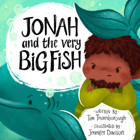
What’s the difference between Spongebob and St Peter? Good question. Come to think of it, here’s a few more...
What’s the difference between two well-known builders: Bob and Noah?
Or between Judas and Dick Dastardly?
And what’s the difference between the famous miracle workers: Jesus and the boy with the lightning stripe on his forehead who can speak “snake"?
Of course, the answer to all these questions is that one is real and the other is imaginary. But children, particularly young children, really don’t know the difference. They are simply people in stories that make them think, laugh, cry or be inspired.
For smaller children, there is simply no difference between fantasy and reality. Night-time fear of monsters is real. But between the ages of 4-5 they start to learn the difference. Many children still have difficulty discerning the difference between fantasy and reality as old as 8 or 9, or even to 11 or 12. The issue can be complicated by the way some parents deliberately maintain fantasies as a playful game, or as a means of manipulation. Santa Claus may come in the first category; the Bogey Man who will get you if you leave your bedroom at night is in the second.

Help children 2-4 years old to discover that God is kind and loving and longs to save people with the story of Jonah and The Very Big Fish.
It’s a familiar problem for Sunday School teachers and parents alike. How do we put water between the brilliantly told, often hilarious, and gripping stories that they love to read night after night, and the stories we read in the Bible? Christians know that it is vitally important to develop the foundations for this crucial difference from the start. And the best way to do this is head on with a “magic" phrase that I learned early on and have not stopped using since. Are you ready? here it is:
"Today’s true story from the Bible."
It’s as simple as that. Before reading, or retelling any story from the Bible, I always preface it with the word “True”. Sometimes, we can emphasise the difference as we segue from one story to the next:
"I love the Gruffalo story, but you know that the Gruffalo is a made up creature don’t you (and Mice don’t talk); But now let’s read a true story from the Bible…"
Children are very concrete thinkers, so it’s also really helpful to surround the “trueness” of Bible stories by getting tactile with things. Show them where Israel is on a map or a globe...
“We live here … and here is where Jesus lived and walked and where this true story from the Bible happened a long time ago…”
And if you are able to make conscious links with other objects — sand, coins, terracotta lamps, pearls, seeds, etc — that you can actually hold in your hands, it really helps to emphasise the reality of the stories. Older children may be learning about the Romans (a perennial subject theme at school), so it’s a good marker point for history...
“Jesus died just a few years before the emperor Claudius invaded Britain, and the Romans took over”.
It’s why we named our series of large format children’s books Tales That Tell The Truth, and why you’ll find that magic phrase on the first page of each one of our latest range of Very Best Bible Story books.
"A True Story from the Bible"
Let’s keep it real folks.
Tim is the author of four new stories in the Very Best Bible Stories series—which combine, fun, interactive story-telling with a robust faithfulness to the biblical text. Noah, Jonah, Daniel and David and Goliath get the treatment, with beautiful illustrations by Jennifer Davidson. Shop here.